
Visit Koh Ker - The UNESCO World Heritage List
VIEW DETAILS
Book Tour to Angkor Wat

Things To Do
Nature & wildlife, safari world phnom penh, phnom ta mao zoo, sam veasna center (svc), confirel - discover the real taste of cambodia, butterfly paradise siem reap, arts & crafts center, helicopter services, cruising and boating, cultural explorations, golfs and driving ranges, massages & spas, cooking classes, scuba diving, cycling and biking, adventure activities, community & eco tourism, book hotels in cambodia.

Spanning more than sixty hectares of land, Phnom Penh Safari is a, first large-scale 200 with a concept of “Four Kingdoms” that exhibits four majestic and fascinating daily animal shows. Witness wildlife as they roam free in open enclosures resembling their natural habitats. Such a sight to behold! Phnom Penh Safari aims to connect people with wildlife hoping to spark positive actions towards these animals and their natural environment.
The Animal Trail Initiative improves the animal qualities of life by giving them a chance to wander long distances and explore diverse environments. Visitor experience goes beyond traditional encounters with animals. As you move around, the zoo moves-around you. This one-of-a-kind experience will surely make Phnom Penh Safari a new landmark in Cambodia.
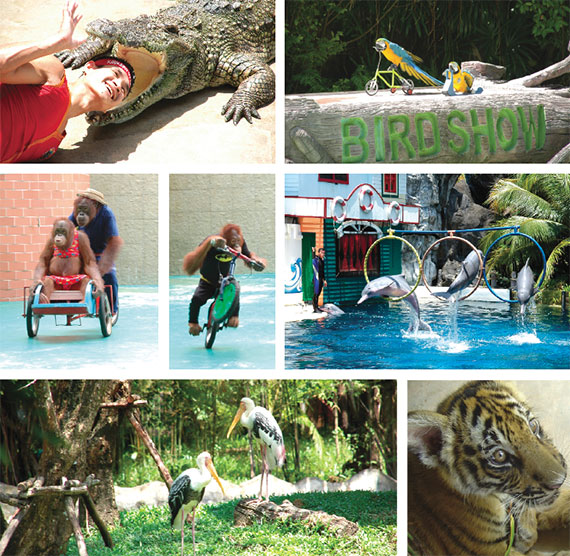
Contact Phnom Penh Safari World
Related Articles...
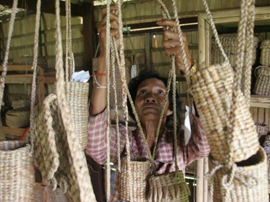
Popular Thing to Do in Cambodia
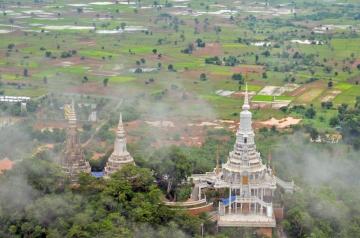
Phnom Praset - Ou Dong Full Day Tour
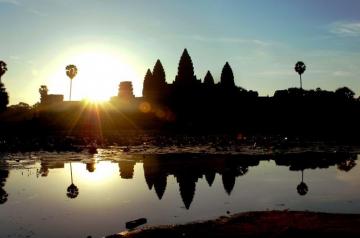
Angkor Wat sunrise view

Zipline Eco-Adventure Inside Angkor Park
More articles on things to do.
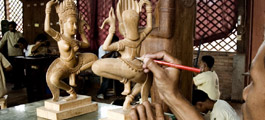
Recommended Cambodia Tours

Cambodia Day Tours

Angkor Temple Tours

Cambodia Classic Tours

Promotion Tours

Adventure Tours

Cycling Tours
Trip planner.
- Essential Information
- General Infomation
- Food & Drink
- Events in cambodia
- Travel Maps
- Accommodations
- Flight Details
- Transportation
- Tour Packages
- Travel Guides
Useful Links
- Cambodia Visa
- Useful Contacts
- Tourist Information
- Phnom Penh Postal Code
- Advertise with us
Travel Services
- Cambodia Tours
- Cambodia Flights
- Cambodia Hotels
- Boat/Cruise Ticket
Travel News & Media
- Cambodia Travel News
- Cambodia Events
- Download & Media
- Photo Gallery
Agency offering information about Cambodia on tourism, culture, history, visa, attractions, province guides, trip planner, hotels, flights, cars, tours, news, photo and online bookings.
- Copyright © 1999-2024 Tourism of Cambodia. |
- Privacy Policy |
- Terms of Service |
10 Things to Do in Phnom Aural Wildlife Sanctuary, Cambodia
- Kirirom National Park
- Phnom Aural Wildlife Sanctuary
- Phnom Bokor National Park
- Phnom Prich Wildlife Sanctuary
- Phnom Samkos Wildlife Sanctuary
- Phnom Tamao Wildlife Rescue Center
- Preah Monivong National Park
- Preah Vihear Protected Forest
- Ream National Park
- Kampong Cham
- Kampong Chhnang
- Kampong Speu
- Kampong Thom
- Kampot
- Kandal
- Koh Kong
- Kratie
- Mondulkiri
- Oddar Meanchey
- Pailin
- Preah Vihear
- Prey Veng
- Pursat
- Ratanakiri
- Siem Reap
- Sihanoukville
- Stung Treng
- Battambang
- Phnom Penh
- Angkor Thom
- Angkor Wat
- Banteay Srei
- Bayon Temple
- Kbal Spean
- Killing Fields
- Koh Ker
- Koh Rong Island
- National Museum
- Royal Palace
- Sihanoukville Beaches
- Silver Pagoda
- Ta Prohm
You will be redirected to your dashboard shortly. We will also call you back in 24 hrs .
- Get A Chance To See Exotic Wildlife On Phnom Penh Safari In 2024
22 Nov 2021
When comes to traveling visiting the safaris or zoos helps to create happy memories of the entire trip. If you are a nature lover then Phnom Penh Safari is the place you should visit at least once in a lifetime. The safari is located in Phum Prek Tarath, Sangkat. And the place attracts a huge number of tourists with its concept of ‘Four-kingdom’. This safari is covering over around sixty hectors land. The ‘Four-Kingdoms’ is able to fill your time with merriment with the enthralling animal shows, fed station, and beautiful ambiance. The best part about this safari is the animals are kept in an atmosphere similar to their natural habitat. That is without a doubt a sight you don’t want to miss. The prime aim of Phnom Penh Safari is to craft a connection between people and wildlife. The animal trail initiative of the place provides the animals with a quality life by helping them to relish in a diverse environment. Phnom Penh Safari is not a zoo where you have seen the animals behind the bars. It is said that the Phnom Penh safari zoo revolves around you while you visit. In this place, you will witness the ordinary lifestyle of the wildlife in a complete natural set up.
4 Things To Do In Phnom Penh Safari
Tripping to Phnom Penh Safari with your family is a great idea. This hub of exotic animals has a lot to offer to make your journey worth. By waking up the nature lover in yourself you can experience the safari according to your taste. But if you are searching for a clue to know from where to start here are a few points for you. Just scroll it down before visiting Phnom Penh Safari location:
1. Enjoy the wildlife
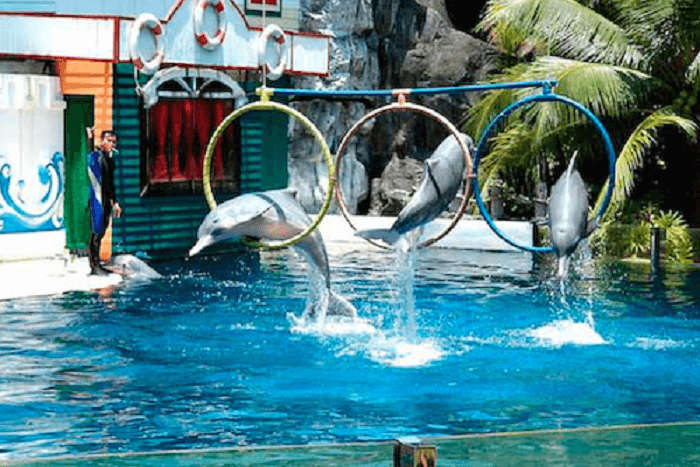
Image Source
The Phnom Penh Safari park is the hub of a vast range of the wild species. The park encompasses of different types of African birds including the endangered macaws. You will also get the sneak peek of the African lions in the park. Amid the wide range of wild birds like Von der Decken’s Hornbill, Silvery-Cheeked Hornbill, East African Crowned Cranes, Fischer’s Lovebirds, Vasa Parrot are worth mentioning. Ostrich, Abyssinian Ground Hornbill, African Grey Parrot, Demoiselle Cranes, Spur-Winged Goose are also available. Cheetah, Olive Baboons, Spider Monkey, Sable Antelope, Watusi Cattle and Springbok will make your visit worth with their startling appearance. The Safari Park is covering around 15-acre lands. Tourist, nature enthusiasts, animal lovers can watch the park by roaming around on foot. Else there is an optional tram ride available. If you opt for this ride this tram ride will take you through different animals exhibits.
Must Read: 8 Water Sports In Phnom Penh To Take Away Your Fear
Cambodia Vietnam Honeymoon Packages on TravelTriangle
Visit Cambodia- Vietnam for your honeymoon and enjoy gorgeous beaches, sparkling bays, colonial structures, stunning landscapes, and colorful culture. Experience luxury at a low cost.

Cambodia Vietnam 14D/13N Honeymoon @ Rs 73,999/-
Plan your honeymoon today!

Romantic Siem Reap - Phnom Penh Cambodia 5D/4N @ Rs 28,000/-
Get quotes from multiple travel experts.
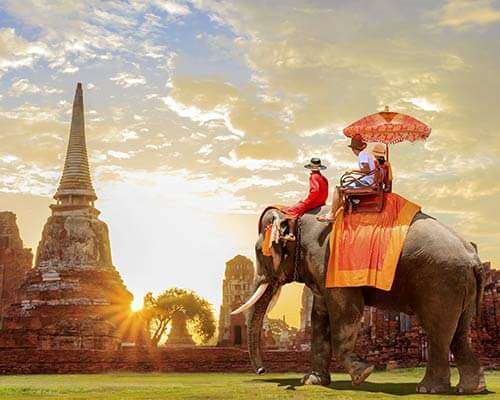
Vivid Vietnam Combodia 6D/5N @ Rs 33,000/-
Compare & customize quotes before booking.
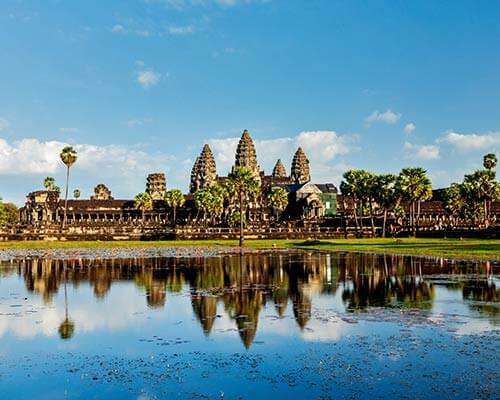
Cheerful Cambodia Vietnam 9D/5N Honeymoon @ Rs 42,000/-
Have Questions? Talk to our travel experts today.

Exhilarating Cambodia Vietnam 8D/7N @ Rs 46,000/-
Best prices guaranteed. EMI option available.

See more at TRAVELTRIANGLE.COM
2. Get close to Marine Creatures

Phnom Penh Safari offers an aquarium full of the marine creature. If you are in love with the sea than this a place for you with a four-building aquarium. It allows you to get close to the mesmerizing water life. And the best thing is you need not to get wet in order to do the connection. The aquariums are comprised of numerous fishes, reptiles, various amphibians along with the invertebrates. The aquarium in the safari features a South Pacific Reef Tunnel. Worth mentioning the reef tunnel encompasses the longest acrylic tunnel in Arizona. While in the safari park experience these sea creatures from a very minimal gap. The Wildlife World Aquarium has a lot to offer to make your visit memorable.
Suggested Read: Phnom Penh Hostels: 11 Affordably Priced Accommodations You Can Stay In
3. Feeding Stations and the Animal Shows

Phnom Penh Safari is the place where more than 600 exotic animals can be seen. At the same time, these animals are endangered too. The animal kingdom in the safari is not limited to that. It offers more than six thousand individual animals; the place is perfect for the animal lovers as the Phnom Penh safari zoo provides feed stations. The animal feeding stations comprise of the giraffe feeding station, Lory Parrot feeding station. In these stations, visitors can feed the animals. This is without a doubt a great opportunity to spend personal time with some of the mesmerizing animals. In addition during your time there, you can also enjoy the animal shows. The animal shows are comprised of various bird shows crocodile show, tiger show, and orang-utan show. With animal shows, feeding stations and a whole lot of animals you can definitely spend an entire day at this place without getting bored. Out of all these, the Orangutan Monkey Show at Phnom Penh safari zoo in Cambodia is a must-see.
Suggested Read: 10 Homestays In Phnom Penh To Stay At For An Authentic Cambodian Experience
4. Capture the Safari Ambience
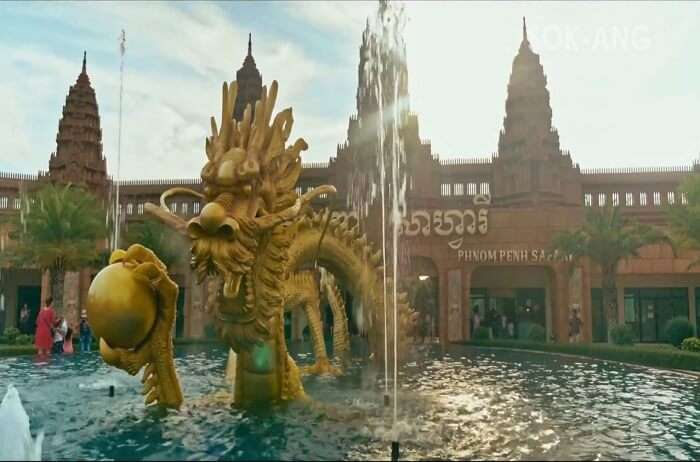
The entire ambiance of the Phnom Penh Safari is eye-catching. While you are there before starting your journey to visit the animals, enjoy the ambiance to its fullest. The main entrance of the safari is made by taking inspiration from famous Angkor Wat. Take time to watch this. While you are in the place you can sit and relax below the Palm trees. Also making your journey enthralling there are pedal boats in the park. During your ride in the boat, you can also feed the fishes on the pond. There are fresh date palm trees in the place. It is undoubtedly a perfect view to take a snap. In the safari world, there are also various open-air stages where various activities take place. Adding a star to its ambiance there is a colossal stone arch “The Great Khaimer gate’ in Phnom Penh Safari. You can have a fun vacay in filled Phnom Penh Safari.
Suggested Read: 6 Spectacular Beaches Near Phnom Penh To Visit On Your Next Vacation To Cambodia!
Best Time For Phnom Penh Safari

Phnom Penh Safari is can be visited all the year around. The best time to visit the safari is from November to June. This is because in these months the weather of the place where the safari is located is ideal. However, December and January are the most popular months among tourist to visit this location. The prime reason is that the rainfall in Phnom Penh, Cambodia is lowest at this time. In addition, the atmospheric temperature is also most pleasant. But keep in mind that these two months are also the most crowded months.
Suggested Read: 10 Cambodian Street Food Everyone Must Try On Their Trip
Phnom Penh Safari Ticket Price And Opening Time
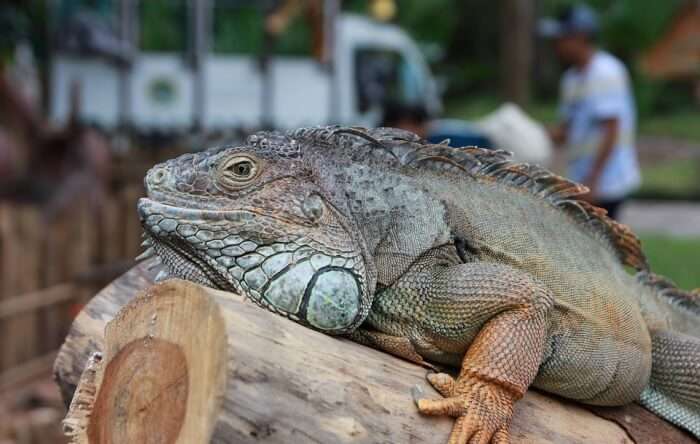
The entry fees rate in Safari World in Phnom Penh is different for adults and children. Ring the authority of the safari to make sure the opening time and to know the Phnom Penh safari world price for the day of your visit For an adult the price range change in between $10 or $20. That is Rs 700 or Rs. 1400 Approx. The entrance fees for children range in between $5 or $12. In Indian repress, it is Rs 350 or Rs 840. The price range of the entrance fees depends on which day of the week and which month you are visiting the safari. December and January are the crowded months. Also, there are a lot of visitors in the place during public holidays. Research on the safari well before to know more about Phnom Penh safari world schedule. The safari is open all over the three sixty-five days in the year including holidays. Make sure you check out the Phnom Penh safari map beforehand to know which all experiences you’d like to indulge in and pay only for those at the time of booking your ticket.
Phnom Penh Safari schedule : It opens at 8.30 AM and closes at 5 P.M every day. But before visiting the safari world called the authority once to enquire the entry fees and to know what attractions are open.
Suggested Read: 10 Best Waterfalls In Cambodia That Ought To Be A Part Of Your Next Trip!
How To Reach Phnom Penh Safari?
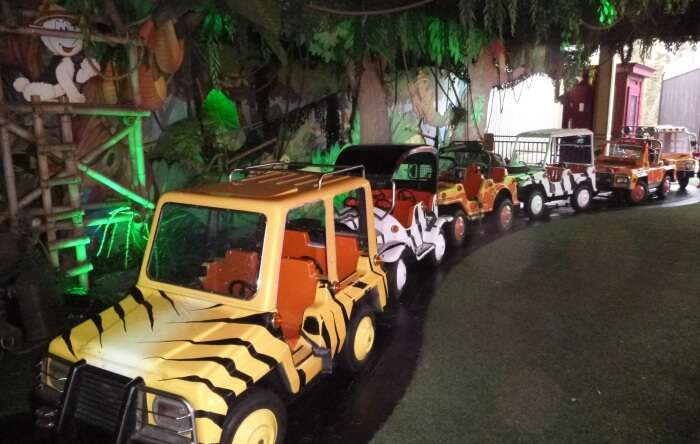
By Air: The Safari World is around 20 K.m To 40 KM. away from the Phnom Penh, Cambodia. To reach the park by air one can take a flight to Phnom Penh International Airport. The airport is located around 7 KM west to the city. After reaching the airport you can hire a taxi to the Safari world. The location is quite famous, so you need not get into the hassles of stopping people by and asking “ where is Phnom Penh safari ”.
By Bus: Phnom Penh can be reached from nearby cities like Siem Reap, Battambang, Sisophon, etc. by bus. There are two bus stations in the city. From the bus station, you can hire a car. But remember to find a cab beforehand to avoid last minute hassle.
By Car: The safari world also can be reached by your private car. And if you are visiting the place for the first time it is better to drive with someone who has been here before.
Further Read: 9 Phnom Penh Restaurants That Offer The Ultimate Gastronomic Experience In Cambodia
Phnom Penh Safari is a great place for a family vacation. Try to reach the place early. Crowds are light in the morning also the animals are energetic. Do not forget to bring wipes and hand sanitizer along with you. Fun time with the animal, ambiance and the close connection to wildlife, this place holds a lot for visitors. Visiting the place will help you to sense the importance of the positive attitude of people towards the wild animal. So when you are going on a trip to Cambodia ?
Looking To Book An International Honeymoon?
Book memorable honeymoon on TravelTriangle with 650+ verified travel agents for 65+ domestic and international destinations.
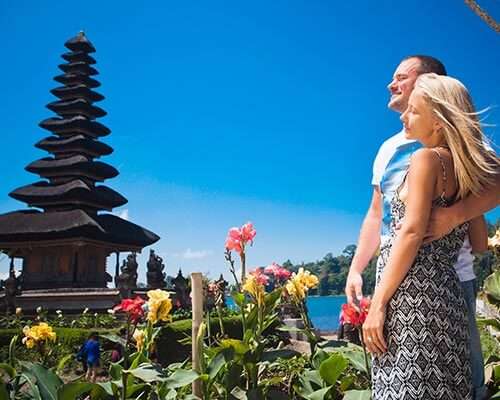
Bali Honeymoon Starting @ Rs 16,999/--

Europe Honeymoon Starting @ Rs 89,999/-
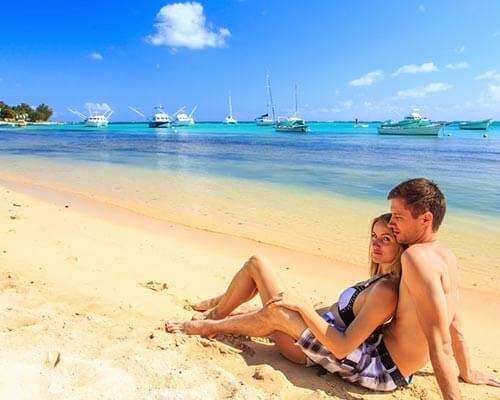
Mauritius Honeymoon Starting @ Rs 27,000/--
Compare and customize quotes before booking.

Maldives Honeymoon Starting @ Rs 39,800/-
Have questions? Talk to our travel experts today.
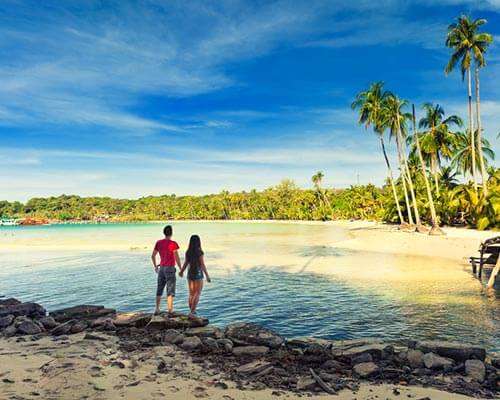
Honeymoon in Sri Lanka @ Rs 13,500-
Best prices guranteed
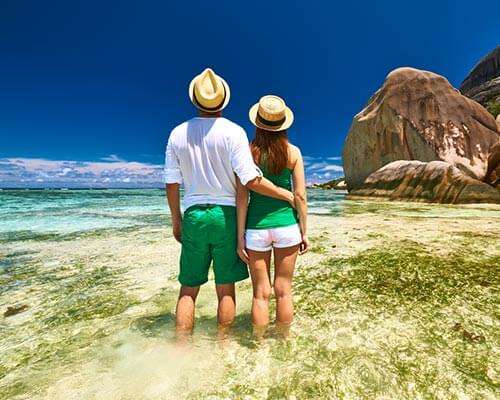
Honeymoon in Seychelles@ Rs 40,999/-
EMI option available
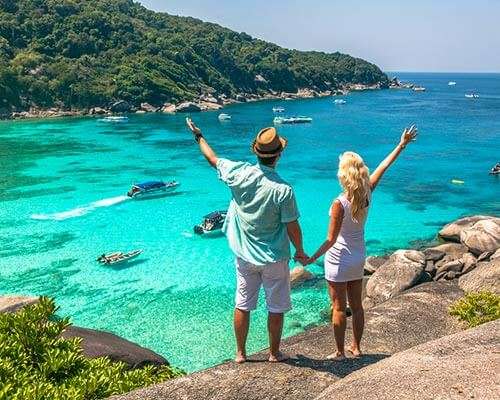
Thailand Honeymoon @ Rs 19,999/
Includes resorts, meals, cabs & sightseeing
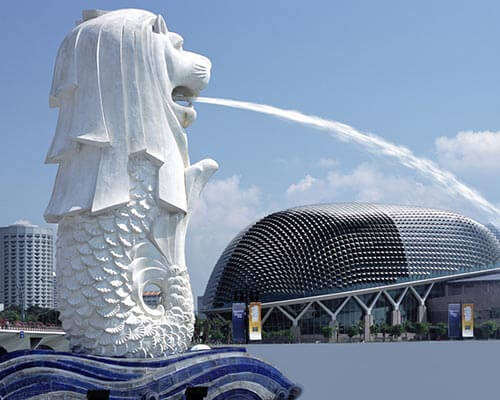
Singapore Honeymoon @ Rs 21,000/-
Gift your partner lifetime memories. Go international
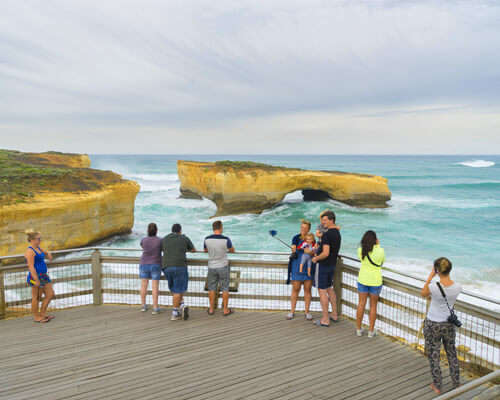
Honeymoon in Australia @ Rs 70,000/-
Romantic pristine beaches
Recent Posts

Phnom Tamao Wildlife Rescue Center: Here Is Everything About The Cambodian Wildlife Haven
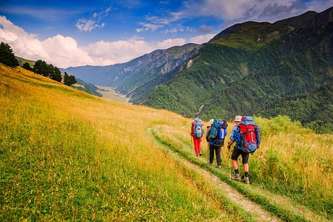
8 Best Trails For Hiking In Cambodia For A Refreshing Experience In 2023
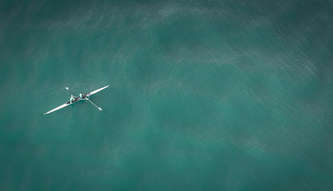
8 Water Sports In Phnom Penh To Take Away Your Fear This 2023
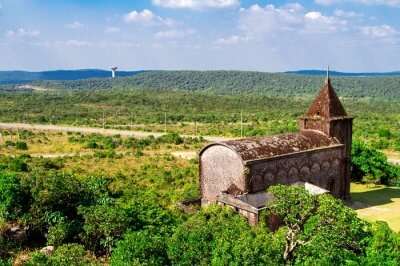
10 Top Churches In Cambodia That’ll Add More Bliss & Beauty To Your Trip
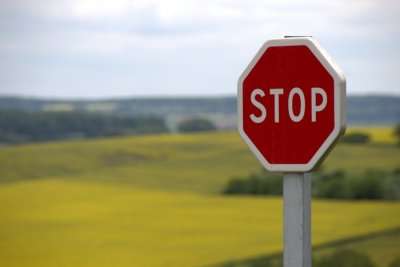
13 Things Not To Do In Cambodia To Save Yourself The Embarrassment
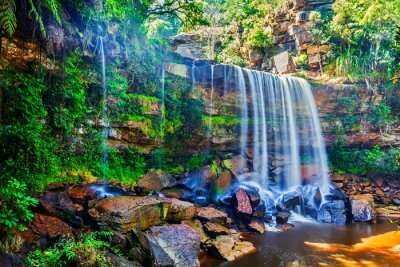
7 Best National Parks In Cambodia For Wildlife Enthusiasts And Nature Fanatics
Trending Blogs

20 Mysterious Places In India To Visit In 2023 More Bizarre Than The Bermuda Triangle

10 Scariest Roads In India That Are A Driver’s Nightmare

101 Places To Visit In India Before You Turn 30 in 2024

35 Exotic Places To Visit In December In India 2024 To Enjoy A Surreal Vacation

60 Best Honeymoon Destinations In India In 2024

95 Best Honeymoon Destinations In The World In 2023 For A Romantic Escape!
Best Places To Visit In India By Month
Best places to visit outside india by month.
- TravelTriangle
- Cambodia » Phnom Penh »
- Tour Packages
- Honeymoon Packages
- Family Packages
- Budget Tour Packages
- Luxury Tour Packages
- Adventure Tour Packages
- Group Tour Packages
- Kerala Tour Packages
- Goa Tour Packages
- Andaman Tour Packages
- Sikkim Tour Packages
- Himachal Tour Packages
- Uttarakhand Tour Packages
- Rajasthan Tour Packages
- Tour Packages From Delhi
- Tour Packages From Mumbai
- Tour Packages From Bangalore
- Tour Packages From Chennai
- Tour Packages From Kolkata
- Tour Packages From Hyderabad
- Tour Packages From Ahmedabad
- Kerala Tourism
- Goa Tourism
- Sikkim Tourism
- Andaman Tourism
- Himachal Tourism
- Uttarakhand Tourism
- Rajasthan Tourism
- Hotels in Kerala
- Hotels in Goa
- Hotels in Sikkim
- Hotels in Andaman
- Hotels in Himachal
- Hotels in Uttarakhand
- Hotels in Rajasthan
- Activity & Adventure
- Friends & Private Groups
- Solo Travellers
- Off The Beaten Track
- Safari Holidays
- Foodie Tours
- Culture & Heritage
- Whistle Stops
- Honeymoon Holidays
- Learning Holidays
- Hiking & Trekking
- North America
- Central America
- Middle East
- South America

- Wildlife in Cambodia
When to go in Cambodia?
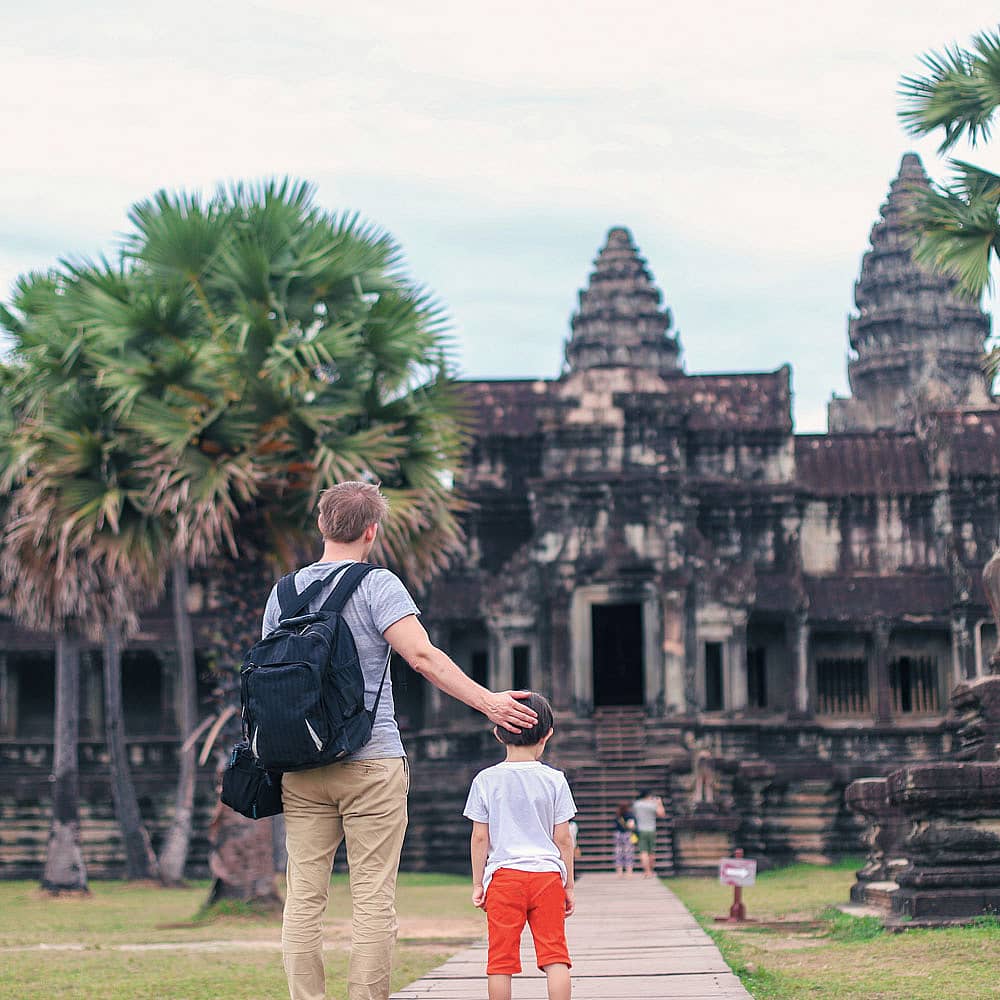
- Evaneos Schweiz
- Evaneos Deutschland
- Evaneos España
- Evaneos France
- Evaneos Italia
- Evaneos Nederland
- Who are we?
- Legal Notices
- Use of cookies
- Terms & Conditions
- Privacy Policy
- DMC Application Form
- Press & Media
- Help center
- Become one of Evaneos' local partners
- currency (£)
Places To Go
- Papua New Guinea
- Philippines
- Solomon Islands
- Timor Leste
Cambodia » TRIP CATEGORIES
- Cultural Discovery
- Sports & Adventure
- Scuba Diving
- Nature & Wildlife
- Escapes & Hideaways

About Cambodia
- Background and Highlights
- Scheduled Expeditions
Points of Discovery
Places to stay, choose your activity.
- Birdwatching
- Photography
- River Cruises
- Voluntourism
- Wildlife Watching
Choose Where You Sleep
Angkor safari tents, cambodia nature & wildlife.
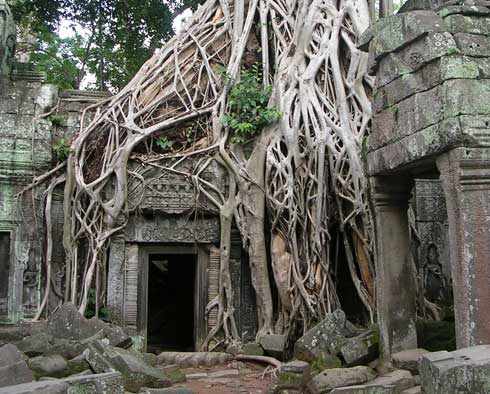
Choose where you sleep
This encounter with Cambodia will include our signature beach and temple safaris away from the crowds for your own unique adventure.
We begin in the graceful capital of Phnom Penh, before we travel to Sihanoukville and descend on a remote white-sand beach to experience one of our signature beach safaris. We then head for the first of our remote temple safaris at the old capital of Koh Ker.
Next, the imposing mountain-top temple of Preah Vihear has the most dramatic location of all of Cambodia’s temples, whilst Anlong Veng was the Khmer Rouge’s final bolt-hole.
A second temple safari at the atmospheric fortress of Banteay Chhmar precedes our final stop at Angkor.
Few sights on earth can match the majesty of the Angkor temples, such as Angkor Wat and the Bayon, whilst we also sample life on the Tonle Sap Lake, South East Asia’s largest inland body of water.
2 Week Safari
14 Days / 13 Nights
Day 1: Arrive Phnom Penh. Royal Palace and National Museum. On arrival head to your hotel for check-in.
In the afternoon, we explore the stunning Royal Palace complex, home to the Cambodian royal family and a symbol of the nation. We enter the Throne Hall where the royal receptions are held, see the Napoleon III Pavilion made from iron, a gift from the French emperor in the 19th century and continue to the Silver Pagoda, named after the 5000 silver tiles covering the floor, each weighing 1kg. Inside are some of the country's most cherished treasures, including a life-size gold Buddha studded with 9584 diamonds, the largest weighing 25 carats. There is also a delicate emerald Buddha made of baccarat crystal, which gives the temple its Khmer name of Wat Preah Keo (Temple of the Emerald Buddha).
We leave the Royal Palace and continue to the nearby National Museum, home to the world's finest collection of sculpture from the Angkor period. The exquisite building was completed in 1920 and features collections from the pre-Angkor, Angkor and post-Angkor periods. We concentrate on the incredible sandstone sculpture from Angkor, as well as the intricate bronzes.
Day 2: Tuol Sleng and Killing Fields. Sunset Boat Cruise. We come face to face with the horrific crimes of the Khmer Rouge. Tuol Sleng was a former high school that the Khmer Rouge turned into a centre for interrogation, torture and death. Today it is a museum of torture and serves to remind visitors of the terrible atrocities that came to pass in Cambodia. 17,000 people passed through the gates of this prison and only seven lived to tell the tale. The Khmer Rouge were meticulous in their record keeping, photographing all the prisoners and many of these haunting black and white images are on display in the cells. Tuol Sleng is a profoundly moving experience and not everyone will want to visit. However, it is key to understanding the hell into which Cambodia descended and how far it has come in the years since.
We then travel out of town to the Killing Fields of Choeung Ek. Prisoners from Tuol Sleng followed this same route to their fate. An old Chinese cemetery, Choeung Ek was turned into an extermination camp for political prisoners. The remains of 8985 people were exhumed from mass graves and are kept in a memorial stupa here. Despite the horrors of the past, it is a peaceful place to go and a tranquil spot to reflect on the tragic events that engulfed Cambodia and its people.
In the late afternoon, we board a local boat for a sunset cruise on the river. We set off on the Tonle Sap River, which famously reverses direction each year, acting as the world's largest natural flood barrier for the Mekong River. We cruise past the Royal Palace compound and around the Chrouy Changvar Peninsular on to the mighty Mekong River. We cruise past small villages and see fishing boats preparing their catch. We return to Phnom Penh after dark.
Day 3: Phnom Penh to Sihanoukville via NHCC Project. We leave Phnom Penh and head out along National Highway 4 towards the south coast. En route we visit the New Hope For Cambodian Children’s village to see the work undertaken by John Tucker and his team in providing a safe and caring community environment for orphaned and abandoned children living with HIV/AIDS.
We then pause to pay our respects to Yeay Peau, a protective spirit who looks after travellers on the road at Pich Nil Pass, where the road cuts through Bokor and Kirirom National Parks to the east and west and is lined with shrines and incense. We continue south to the popular resort of Sihanoukville, home to Cambodia's finest beaches. We check into our hotel and leave the rest of the day free to enjoy the beautiful beaches and warm waters.
Day 4: Island Beach Safari. We leave Sihanoukville and board our boat to experience Cambodia's undiscovered islands. We travel out to Koh Rong, stopping along the way for the chance to snorkel around some of the smaller islands. We anchor off the west coast of the island, where there is an incredible white sand beach stretching for almost 10km. We leave some time free to swim or relax in this lovely spot, while our team prepares a fresh seafood barbecue for lunch. This is our idyllic camp for the night, so we encourage guests to make themselves at home, beachcombing under the swaying palms or just snoozing in the shade. Overnight in luxury tent.
Day 5: Sihanoukville to Kompong Thom via Phnom Penh. After a private breakfast on the island, we board our boat to return to the mainland. We leave Sihanoukville and travel north on National Highway 4 towards Phnom Penh, the lively riverside capital of the country. Then we travel northeast towards the bustling provincial city of Kompong Cham. En route, there is the chance to pause at Skuon, affectionately known as 'Spiderville', where it is possible to sample the local delicacy of deep fried tarantula. We journey west to the provincial capital of Kompong Thom, and stay overnight in a comfortable local hotel.
Day 6: Visit Sambor Prei Kuk. Koh Ker Temple Safari. After breakfast in Kompong Thom, we explore the impressive pre-Angkorian capital of Isanapura, known today as Sambor Prei Kuk. The first major temple city in South-East Asia, the brick temples of Sambor Prei Kuk are a peaceful contrast to their more illustrious relatives at Angkor. We explore the main temples here, including Prasat Tao with its elaborately coiffured lions and Prasat Sambor, with its crumbling sanctuaries.
After lunch, we continue northwest on National Highway 6. This was an old Angkor road and we stop in Kompong Kdei to see one of the ancient Angkor bridges that were built to span the rivers. Spean Praptos has more than 20 arches and is a spectacular sight, reinforcing the impression that the Khmers were like the Romans of Southeast Asia.
We then head into the bush to the remote Angkor capital of Koh Ker. In the 10th century Jayavarman IV (928-942) fell out with his family, stormed off to the northwest and established the rival capital of Koh Ker. Although the capital for just 15 years, Jayavarman IV left a legacy of 30 major temples and some gargantuan sculpture that is on display in the National Museum in Phnom Penh. We visit Prasat Thom, a seven-storey step pyramid, more Mayan than Khmer, with commanding views over the surrounding forest, nearby Prasat Krahom or Red Temple and other temples, including the five towers of Prasat Ling, each enclosing a giant linga or fertility symbol, the biggest and best found in situ anywhere in Cambodia.
We then return to our camp for the night, spending the night in a luxury safari tent.
Day 7: Koh Ker to Anlong Veng. Preah Vihear. We rise early to enjoy a sunrise across the temple complex and after breakfast, we explore some of the lesser known sites around Koh Ker. We then continue north towards Preah Vihear. We enjoy a local lunch along the way before arriving at the base of this sacred mount. The snaking road up the mountain is very steep in places and we eventually emerge at the second enclosure of this king of the mountain temples.
We explore the temple on foot and continue onwards to the final level, clinging to a cliff face in the Dangrek Mountains, towering hundreds of metres above lowland Cambodia below. The views from this most mountainous of temple mountains are breathtaking. Later we continue our journey to the former Khmer Rouge stronghold of Anlong Veng, where we enjoy dinner and our overnight accommodation.
Day 8: Anlong Veng to Banteay Chhmar Temple Safari. We rise early for breakfast and to visit the house of the former military strongman Ta Mok as well as the gravesite of Brother No 1, Pol Pot. Anlong Veng was the last Khmer Rouge stronghold to surrender to government forces in the late 1990s. We then travel west to the incredible jungle temple of Banteay Chhmar, famous for its signature faces of Jayavarman VII. On arrival we see the magnificent carvings of Lokesvara with 32 arms, nicknamed lok sam-pee (Mr 32) by Khmers, as well as the beautiful Hall of Dancers, similar to the famous Preah Khan. After clambering about among this sleeping giant, we continue to explore the outer complex, including the outer gate of Ta Prohm, like a smaller cousin of the impressive Angkor Thom gates and protected by a moat and the jungle-clad face-tower of Samnang Tasok. We spend the night in our luxury tent close to the temple of Banteay Chhmar.
Day 9: Banteay Chhmar to Siem Reap. Visit Artisans d’Angkor. After enjoying the sunrise at Banteay Chhmar, we leave some free time to explore more remote outer gates and temples around the main complex. We continue south to the enigmatic temple of Banteay Top. Here the central tower has collapsed, only to be rebuilt and resembles a precarious tower of building blocks. We then journey south to the provincial capital of Svay Sisophon before we then continue west to Siem Reap to the rural district of Puok, home to the Artisans d'Angkor silk weaving project. We visit a working silk farm where it is possible to learn about all aspects of the production process. Then, transfer to hotel for overnight.
Day10: Visit Roluos group. Preah Khan and Remote Temples. We travel back in time to one of the earliest capitals in the Angkor area, Hariharilaya, now known as Roluos. We begin with a visit to the brick temple of Lolei, originally set on an island in the centre of the Indratataka baray (reservoir). We continue to Preah Ko (sacred cow), named in honour of Shiva’s mount, Nandin. Originally coated in stucco and painted, there is still some of the ancient plaster visible on the rear towers. Finally, we encounter Bakong, the earliest of the temple mountains, which later became the signature of Khmer kings. It is a giant pyramid, its cardinal points marked by giant elephants. For those that are interested, we can offer a short diversion to the small country town of Roluos, a world away from Siem Reap.
In the afternoon, we travel to the mighty temple of Preah Khan or 'Sacred Sword', built by King Jayavarman VII in the late 12th century. Sister temple to Ta Prohm, the cruciform corridors here are impressive and there are some wonderful carvings adorning the walls, including the spectacular hall of dancers. We then continue on to the elegant curves of Neak Poan. This petite temple is the ultimate ornamental fountain, its series of elaborate spouts including the heads of lions and elephants. We finish by experiencing sunset over the rice fields from the royal crematorium of Pre Rup, a classic view of the Cambodian countryside.
Day 11: Kbal Spean, Banteay Srei, Landmine Museum. We journey north to Kbal Spean. The original ‘River of a Thousand Lingas’, Kbal Spean is an intricately carved riverbed deep in the foothills of the Cambodian jungle only discovered in 1969. The Khmers venerated its limestone bed with a riot of carvings, including thousands of lingams. A trip to Kbal Spean is one of the easiest ways to experience a short jungle trek in the Angkor area, as it is a steady but scenic climb to reach the river carvings.
We head to Banteay Srei, Angkor’s ultimate art gallery. This petite pink temple is the jewel in the crown of Angkor-era sculpture. The elaborate carvings here are the finest found in Cambodia and the name translates as ‘Fortress of the Women’, thanks to the intricate detail here, considered too fine for the hands of a man.
On the way back to Siem Reap, we visit the Cambodia Landmine Museum to learn more about the scourge of landmines and the shadow they cast over rural communities in Cambodia with a visit to this flagship museum promoting mine awareness and education. Later we visit the 12th century temple of Banteay Samre. Built by King Suryavarman II, the genius behind Angkor Wat, this temple has been extensively restored.
Day 12: Ta Prohm dawn. Angkor Thom. We rise early to travel to Ta Prohm in the dawn light. Ta Prohm has been abandoned to the elements, left as it was ‘discovered’ by French explorer Henri Mouhot in 1860, the tentacle-like tree roots here are slowly strangling the surviving stones. After soaking up the unique atmosphere of Ta Prohm, we continue to the giant pyramid of Takeo, one of the highest temples in the Angkor area. Built at the end of the 10th century, it was never completed. This morning we also visit the remains of an old Angkorian bridge which once spanned the Siem Reap river. There is also the option to visit the smaller temples of Chau Say Tevoda and Thommanon for avid temple enthusiasts.
In the afternoon, we visit the immense walled city of Angkor Thom that was the masterpiece of King Jayavarman VII. The scale is simply staggering and we are immediately overwhelmed by the audacity of Jayavarman on arrival at the city’s gates. We begin our visit at the Terrace of the Leper King, continue along the Terrace of Elephants, and visit the Baphuon, once of the most beautiful temples at Angkor, dating from the 11th century. It has undergone a massive renovation by the French and is now once again open for viewing. Our climax is the enigmatic and enchanting temple of the Bayon. Its 54 towers are each topped off with the four faces of Avalokiteshvara (Buddha of Compassion), which bear more than a passing resemblance to the king himself. We unravel the mysteries of the temple’s bas-reliefs, with their intricate scenes of ancient battles against the Chams and their snapshot of daily life during the Angkor period.
Day 13: Beng Mealea and Floating Villages. We travel to the lost temple of Beng Mealea, the titanic of temples, a slumbering giant lost for centuries in the forests of Cambodia. It is the most accessible of Angkor’s lost temples, a mirror image of Angkor Wat, but utterly consumed by the voracious appetite of nature. Constructed by Suryavarman II in the 12th century, the builder of Angkor Wat, the forest has run riot here and it is hard to get a sense of the monument’s shape amid the daunting ruins.
Then, we travel to Kompong Pluk and board small wooden boats for the trip to visit Kompong Pluk. Cruising down a narrow waterway, we enter this medieval floating village, where the houses stand atop stilts as much as seven metres above the water. Everything lives on the water, pigs, dogs, crocodiles and people, all jockeying for space in this incredible floating town. We explore the local wat here, before boarding a bigger boat to take us through the flooded forest and across the Great Lake to Chong Kneas and the holy mountain of Phnom Krom. We climb Phnom Krom for a glorious sunset over the Tonle Sap before heading back to Siem Reap by road.
Day 14: Angkor Wat Sunrise. Departure. Rising at the crack of dawn, we journey out to the Mother of all temples, Angkor Wat. Believed to be the world's largest religious building, this temple is the perfect fusion of symbolism and symmetry and a source of pride and strength to all Khmers. Built in the 12th century by King Suryavarman II, this is most famous temple at Angkor. We stay at Angkor Wat to enjoy a picnic breakfast. As the crowds return to their hotels, we venture into Angkor Wat to enjoy its magnificence in peace and quiet, beginning at the bas-reliefs that tell of tales from Hindu mythology and of the glories of the Khmer empire. Afternoon is free at leisure until transfer to airport for departure flight.
Traveling in Style
In a country that still has little infrastructure except in the main collecting points of Siem Reap, Phnom Penh and Sihanoukville, there can be no better way to explore the Jungle Temples than by taking your own accommodation along with you.
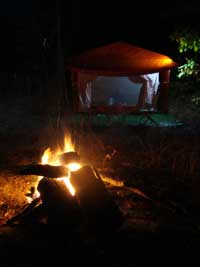
The tents are based upon the tried and tested African safari tents and are fully waterproof. Each day they are pitched at your destination by our staff on a durable tarpaulin and they consist of two layers. The inner layer comes with complete mosquito and insect protection and includes five meshed windows for light and breeze during the day. The overall dimensions of the tent are 3m wide x 4m long x 2.5m high. Yes, you heard it right, 2.5m high offering standing room throughout.
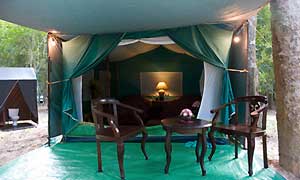
Explore Cambodia
By trip category, by activity.
- Arts & Handicrafts
- Batik, Silk, Ikat
- Canoeing & Kayaking
- Community Stay
- Cycle Touring
- Liveaboard Diving
- Mountain Bike Tours
- Music & Dance
- Temples & Religion
Symbiosis United Kingdom:
Symbiosis asia:, symbiosis usa:, license information.
Need travel insurance?

5 hiking places in Cambodia you should not miss

Well-known Kun Khmer Fighters

Cambodia Rapper Icons
Essential guides to the iconic cambodia wildlife.
Cambodia is a land of incredible biodiversity, located in the crossroads of Southeast Asia. The country shares borders with Vietnam to the east, Thailand to the northwest, Laos to the north, and the Gulf of Thailand to the south.
This motherland comprises abundant natural resources surrounded by rivers, forest, steep hills and mountains, notably the Cardamom Mountains. The great Mekong River, on the other hand, runs through the nation's heart; meanwhile, the Tonle Sap river, which flows to the Mekong, is one of the world's greatest freshwater fish suppliers and Southeast Asia's biggest freshwater lake.
Cambodia wildlife safari might not be a hot destination for observers despite the country's landscape. Yet, some isolated jungle may provide the ultimate possibilities for wildlife surveillance in Southeast Asia. The truth is that Cambodia wildlife primarily lives in an intact ecosystem, such as the Elephant Mountains, the Lower Mekong, and especially the Cardamom Mountains. The implication is that these forests are home to several endangered species, including the tiger, sun bear, Asian elephant, clouded leopard, gibbon, and gaur.
Due to deforestation and habitat degradation, this country’s wildlife is heavily endangered. As a result, many Cambodia wildlife organizations have been active with various initiatives to safeguard Cambodia's remaining animals so that related parties would receive a glimpse of these environmental concerns and discover what they can help.
In this article, you will get to know some of Cambodia’s most iconic wildlife habitats in specific areas of the country as follows.
1. Elephants From Asia
In Cambodia's biggest Asian elephant habitat, Mondulkiri is shelter to one of Southeast Asia's few surviving elephant corridors. While encountering wild elephants is uncommon, chances are visitors can contact Cambodia wildlife tour and can get intimate with these magnificent creatures in the deep forest via some initiatives, such as Elephant Valley Project. Still, travelers should never anticipate going on an elephant ride since this act is strongly against the organization's mission.

2. Irrawaddy Dolphin
Severely threatened, Irrawaddy dolphins live in a narrow section of the river of Mekong. During the 1960s, Kratie, which is located along the Laos and Cambodia border, was the shelter for thousands of dolphins. Currently, World Wide Fund for Nature (WWF) Cambodia estimates just around 85 dolphins left in the country. Travelers can hire a local trip boat from Kampi for around 20 minutes via flooded forest during the rainy season to view the dolphins. And it takes roughly 40 minutes during the dry season because the animals go farther down the river.
3. Crested Gibbon with Yellow Cheeks
This special gibbon is mostly found in northeastern Cambodia, southern Laos, southern Vietnam, while Cambodia has the highest number. However, these gibbons are vulnerable to habitat loss and illegal trade. According to a recent assessment, Seima Biodiversity Conservation Area has the highest number of wildlife species in Cambodia, while the Eastern Plains Landscape of Mondulkiri's Phnom Prich Wildlife Sanctuary stays second.
4. Giant Ibis
The Cambodian national bird, the enormous ibis, is severely vanishing. Preah Vihear's northern region, near the Thai border and Mondulkiri, has a limited population. However, a few centers are dedicated to preserving the country's decreasing birdlife by Cambodia wildlife experts. They offer a series of excursions that take guests to observe the giant ibis and other wildlife.
5. Banteng
Banteng is a supremely attractive and elegant wildlife in Cambodia. However, its population dropped by roughly 95%, one during the 1960s and others during the 1990s reported by WWF Cambodia . Nowadays, banteng lives in the eastern forest of Cambodia. Their population is pretty stable because of the authorities' efforts to protect them. But regardless of all that, illegal hunting, habitat degradation, and illness continue to put this animal species in great danger.
6. Clouded Leopard
The timid night cats enjoy their lives on the branches of trees. However, hidden camera set-ups in Mondulkiri have been capturing them sometime. Visitors can find them at Phnom Tamao. This wildlife alliance’s rescue center saves a wide variety of wildlife from the illicit trade, trafficking and relocation before being freed back into their wild nature.
7. Sun Bear
This type of wildlife is the tiniest and most endangered of the world's eight bear species. Travelers can see them at Phnom Tamao. Naturally, they love lounging on treetops, eating delicious fruits, tiny mice, birds, insects, and, more than anything, honey. These primates were formerly numerous in Southeast Asia's low-lying forests, while some living in protected places like Ratanakiri and Mondulkiri. Unfortunately, these species are often trapped and killed. Many people believe this animal can be used for effective medicinal purposes.
8. Germain's Silver Langur
They live in green and riverine forests. The grown-ups are silvery gray, while their younger ones have a bright ginger color. Langurs can be seen a lot in the country – the majority of them inhabiting Mondulkiri's Eastern Plains. No matter how, WWF Cambodia believes that the number has been cut in half by now due to hunting them for old-fashioned medication.
9. Pygmy Slow Loris
Pygmy slow lorises look so adorable. Because of its nighttime living, people frequently cannot recognize their way of existence. Yet, these animals can be seen around the Mekong River. Most of these inhabitants live in Phnom Prich Cambodia Wildlife Sanctuary. Nevertheless, their decrease in population owes to the attack on traditional medicine. Aside from that, this primate is considered a common element in conventional Khmer remedies.
10. Sunda Pangolin
WWF Cambodia remarks that pangolins are one of the most pricy animals in the illegal wildlife trade, regularly confiscated from poachers. Rescued species, indeed, can be found at Phnom Tamao Rescue Center. They are ready for a new shelter in nature again. However, due to high levels of hunting for medication, the population of Sunda Pangolin is believed to decrease more than half in the last 15 years throughout the country.
11. Pelochelys Cantorii
The Cantor's giant softshell turtle is another endangered species that makes its home in Cambodia. It is a species that is on the verge of extinction. These turtles can expand up to almost two meters, and can also be spotted in Kratie and a small part of the Mekong River. Following the protection and breeding initiatives at the conservation center in Kratie, giant turtles are relatively stable nowadays. Moreover, travelers can visit the newborn and adult turtles and get to know about the authority's efforts to rescue these wildlife species.
References:
- M. (2017, November 2). 11 Awesome Native Animals You Must See in Cambodia . The Culture Trip. Retrieved March 11, 2022, from https://theculturetrip.com/asia/cambodia/articles/11-awesome-native-animals-you-must-see-in-cambodia/
- Fauna & Flora International. (2018, February 21). Cambodia . Retrieved March 13, 2022, from https://www.fauna-flora.org/countries/cambodia/
You may also like

Bank Collections in Cambodia

International schools in Cambodia

Sam Veasna Conservation Tours
Ethical birding and wildlife tours in cambodia – since 2006, from half day to 24 day birding and wildlife tours with cambodia’s most expert and specialist guides.


SVC runs birding and wildlife trips with unique access to wildlife conservation sites across Cambodia
Sam Veasna Conservation Tours (SVC) is an officially registered tour company in Cambodia. We give visitors unique access to birding and wildlife sites across Cambodia. Our mission is to sustain Cambodia’s wildlife and communities through ecotourism.
Recommended Tours
The tours highlighted below have been recommended by our expert bird guides. The tours offered below range between half-day to multi-day tours. Click “Read More” button to get the latest tour details, availability and pricing.

Critical Cambodia

Explore Jahoo

Giant Ibis Birding Tour: 3 Days, 2 Nights

Half Day Birding in Angkor Wat

Koh Ker, Beng Mealea Forest Temples

Tonle Sap Waterbirds and Floating Village Adventure

Our tours are designed to show you the best of birding, wildlife and nature, the real places of Cambodia
We take you places that are ‘off the beaten track’ in wildlife sanctuaries and protected areas as well as the more famous ‘must-see’ destinations.

Wildlife Conservation Society

Swarovski Optik
Design your own cambodian adventure.
We offer custom tour packages which gives you the opportunity to create your perfect experience. If you would like to find out more about putting together a custom tour, please head over to our information page.
Subscribe to our Newsletter
Be the first to receive updates about Cambodia’s wildlife, our conservation projects and news on upcoming tours.

Are you ready to venture into the unknown?
“Your Stay Keeps the Forest Standing”
Cardamom Tented Camp is an ecolodge located in the Cardamom Mountains in Cambodia. Offering nine luxurious safari-style glamping tents, the lodge aims to minimize the human footprint on the natural world and serve as a role model in promoting sustainable ecotourism practices within both the national park and Cambodia as a whole.
Located on an 18,000-hectare (180 km2) concession, the lodge and its surroundings are home to pristine lowland and coastal habitats linking wildlife corridors to the Cardamom Mountains. Eco-friendly trekking and kayaking packages are available for adventure enthusiasts who are keen to be a part of real conservation work.
Cardamom Tented Camp is a three-way initiative between Minor Group, YAANA Ventures and Wildlife Alliance to ensure the land and its biodiversity does not fall into the hands of loggers, poachers and sand dredging operations.
Travel Advisories & Waiver Policies
With the tagline, ‘Your Stay Keeps the Forest Standing,’ Cardamom Tented Camp is a three-way initiative between The Minor Group, YAANA Ventures and Wildlife Alliance that offers eco-friendly packages to adventure enthusiasts keen to be a part of real conservation work.
The eco-camp is home to nine comfortable safari-style tents located inside Botum Sakor National Park that minimize the human footprint on the natural world and serve as a role model in promoting sustainable tourism practices in the park and within Cambodia as a whole.
The desire to create the camp grew out of a concern that an 18,000-hectare (180 km2) concession would fall into the hands of loggers, poachers and sand dredging operations. The tract of land is home to pristine lowland and coastal habitats linking wildlife corridors to the Cardamom Mountains.
Cambodia unveiled
Cambodia’s vast forests and pristine natural resources are threatened by illegal logging, poaching and habitat destruction. By adhering to sustainable tourism practices, Cardamom Tented Camp is making a stand against these destructive trends.

What type of adventurer are you?
Trekker Package
3 Days – 2 Nights
Our Trekker Package you will learn about Wildlife Alliance’s operations and join a patrol with Wildlife Alliance Rangers trekking through dense jungle along abandoned poaching and logging trails. Visit the Rangers Station where the confiscated equipment of poachers – including traps and improvised hunting rifles – is on display. You’ll be stunned by the diversity of flora and fauna in the park. Keep your eyes peeled for macaque, gibbon, hornbill and other rare wildlife. Guests can also kayak down the Preak Tachan River, or take one of the self-guided hikes along our carefully selected trails.
Explorer Package
4 Days – 3 Nights
In addition to going on patrol with Wildlife Alliance Rangers, this Explorer Package provides you with a unique opportunity to explore the forest, mangrove and river areas on your own. You can go hiking, use our kayaks to paddle along the meandering waterways, or simply relax by the river on the camp’s floating pontoon and soak up the magical atmosphere. Keep your binoculars handy for those delightful opportunities to observe rare birds and other wildlife. In the mornings and early evenings relax to the sounds of the echoing forest, such as the hauntingly beautiful whooping of the gibbons.
Conservation
Flora & Fauna
The Safari Style Tents
Botum sakor national park.
Situated in western Cambodia’s Koh Kong Province, Botum Sakor National Park is the country’s largest park, a pristine biodiversity comprising of gently sloping lowlands and coastal habitats that is home to some of the world’s most endangered species.
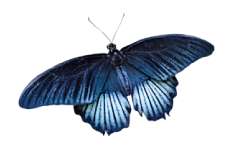
Conservation & Wildlife
Cardamom Tented Camp’s objective is to support the conservation efforts of Wildlife Alliance in cooperation with the local community, enabling guests to participate in conservation-related activities that protect the evergreen forest and its animals.

CARDAMOMTENTEDCAMP
Sign up to keep in touch.
Subscribe to our newsletter for updates on our conservation work, plus our latest deals and discounts. We promise not to spam you.


Wild Mondulkiri
Jahoo offers exclusive gibbon and primate spotting experiences in Keo Seima Wildlife Sanctuary, Cambodia.
Gibbon Conservation
Jahoo is the best place in Cambodia to observe wild gibbons and other primates in a protected forest.
Community-owned Ecotourism
Jahoo is an ecotourism enterprise providing wildlife-friendly employment and motivating community-led conservation action.
Discover Jahoo
The mission of Jahoo is to provide unparalleled gibbon watching experiences that motivate conservation action and promote indigenous Bunong culture
Gibbons: Jahoo offers exclusive tours to see unique gibbons and other primates in Keo Seima Wildlife Sanctuary.
Conservation : Jahoo motivates community conservation action protecting a globally important primate hotspot.
Community: Jahoo links conservation success to community development motivating long-term community leadership whilst promoting indigenous rights.

Famous for its abundance of primates, Jahoo is home to the globally endangered southern yellow-cheeked crested gibbon.
Sheltering more than 25% of the population, it is a global hotspot for this unique species.
Join gibbon researchers tracking a habituated group of southern yellow-cheeked crested gibbons, gaining unparalleled access to this endangered species. Led by indigenous local guides, witness traditional forest skills, explore remote waterfalls and spot other rare primates and unique wildlife.
Gibbon tracking, forest hiking and a sacred jungle waterfall
Witness the jungle at night whilst in comfort at the iconic bamboo camp
An immersive journey into forest, endangered wildlife and indigenous Bunong culture
Jahoo presents a unique opportunity to visit Keo Seima Wildlife Sanctuary.
Follow the eerie song of the rare yellow-cheeked crested gibbon, spot endangered black-shanked douc langur, discover traces of asian elephant and sun bear, glimpse spectacular birdlife.
Discover Cambodia

Jahoo is the best destination to observe wild gibbons within a protected area.
Your visit contributes to essential gibbon conservation and supports the indigenous community in protecting ancestral land.
See Why Travelers Love Us!
Discover what makes us a 2023 Traveler’s Choice Award winner by reading the firsthand experiences of fellow adventurers. Dive into our recent testimonials to see why travelers just like you are raving about their unforgettable journeys with us.
Jahoo IS the real deal!
Keo Siena Wildlife Sanctuary is being protected and studies by the community associated with Jahoo! We had an amazing time interacting with the local guides and researchers. We heard the gibbons singing each morning at 5:30am and had full days of hiking learning about the ecosystem and local culture. The food was delicious, fresh and plenty! Also, the accommodations were very comfortable. We highly recommend this activity for adults who love nature and local ecotourism combined with long term scientific research!
Orlando, FL
Amazing experience with Jahoo!
I had an amazing stay with Jahoo. What an incredible place! The camp is beautiful, the staff very friendly, good local food, skilled guides and Keo Seima forest is beautiful! Got to see the gibbons, doucs, loris and the rare Germains peacock pheasant. Couldn’t have wished for more. Thank you Jahoo!
Definitely recommend booking with Jahoo. It is the real authentic experience of wildlife trekking.
Puts the “eco” in eco-tourism
This was an amazing experience of a lifetime. The conservation value of this project is terrific and their engagement with the local communities should be a model to be replicated elsewhere. This project puts the eco in eco-tourism. The team on the ground are great interpreters of the natural history of the area, the Bunong people, and of the gibbons, doucs and macaques. What an amazing experience!

Discover unrivalled wildlife spotting and cultural experience
Cambodia Wildlife Sanctuary

Top ways to experience nearby attractions

Most Recent: Reviews ordered by most recent publish date in descending order.
Detailed Reviews: Reviews ordered by recency and descriptiveness of user-identified themes such as waiting time, length of visit, general tips, and location information.
Also popular with travellers

Cambodia Wildlife Sanctuary - All You Need to Know BEFORE You Go (2024)
- (0.00 km) Copa Boutique Resort
- (12.06 km) Hariharalaya Yoga and Meditation Retreat Center
- (10.97 km) Lom Lam Eco Village Homestay
- (3.17 km) Chanmol Farm Stay
- (11.78 km) Phum Steng Community
- (11.66 km) Stoeng Trorcheak Restuarant
- (11.48 km) Stoeng Trorcheak Restaurant
- (13.01 km) Bakong Butterfly Garden Restaurant
- (13.63 km) Sister Café & Restaurant
- (0.00 km) Siem Reap Transport Booking
- (0.00 km) You Khemarak
- (0.00 km) Chhoy Tuk Tuk and Car Driver
- (12.42 km) Kulen Elephant Forest
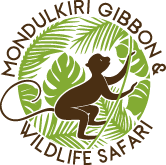
- Jungle Treks
- Elephant Tours
- Meet the Elephants
Mondulkiri Gibbon & Wildlife Safari, Trekking – but with a community based focus!
Hello! My name is Torn
I am a local guide from Senmonorom, Mondulkiri. I now run the Mondulkiri Gibbon & Wildlife Safari, supported by Bunong Elephant Project. It is an eco-tourism organization developed in consultation with the indigenous Bunong community in Andong Kraleng village. The Andong Kraleng village is located in the rural area and in the heart of the Seima Protected Forest of Mondulkiri, Cambodia where there are many difference kinds of Wild Animals living around there, such as elephants, bears, gibbons, black shanked doucs, Hornbills plus many others! Keo Seima Wildlife Sanctuary (KSWS) in eastern Cambodia’s Mondulkiri Province is home to the Jahoo Gibbon Camp , which lies in the core of the sanctuary in the Seima Forest. Covering some 2,000 km2 the KSWS is working with multiple partners to preserve this critically important habitat of endangered species.
The Mondulkiri Gibbon & Wildlife’s Safari main focus is to help to organize a safe and enjoyable trip to the Seima Forest on your Day / Overnight tour. As a community project, monies raised will be used to protect the forest from illegal logging, save endanger wild animals and to support the local community through providing good, safe jobs to Bunong people, as well as supporting education and welfare for marginalize for Bunong children and families.
Jahoo Gibbon Camp is a truly responsible tourism and conservation project that is home to seven species of Gibbon, including the yellow-cheeked crested gibbon. The camp itself is part of a key conservation project with the WCS and the indigenous Bunong people, an aboriginal Cambodian minority ethnic group. On this early morning walk with the Gibbon Research team you should also look out for Pig-Tailed and Long-Tailed Macaques and the silvery Lutung, also known as the Silvered Leaf Monkey or Silvery Langur.
The Bunong People
Introduction / History
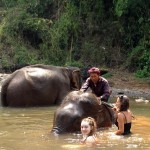
What Are Their Lives Like? The Bunong culture and way of life is intimately associated with the forest area in which they live. Access to land and the forests is essential to their survival. The Bunong practice labour-intensive swidden (‘slash and burn’) agriculture, following a 15-20 year cycle, using one site for up to five years before moving to a new location.
What Are Their Beliefs? The Bunong are normally not members of any organized religion but instead practice animism; this is to say that they believe all things have spirits – animals, plants, hills, stones, jars, buildings – everything. Their ancestors are also represented by spirits and the stability of their lives depends on the satisfactory appeasement of all these various types of spirits often through holding ceremonies and rituals.
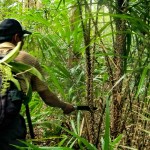
Healthcare Many serious diseases have a much higher rate of prevalence in Mondulkiri than in other provinces. Also, the Bunong do not possess basic information which could allow them to treat or prevent simple diseases.
- How to Book
- Customer Zone
- Special Offers
- Late Availability
Cambodia & Vietnam Wildlife Tour
« All Events
April 24, 2025 - May 10, 2025

Cambodia & Vietnam Wildlife Tour
Cambodia and Vietnam are home to some incredible rare and enigmatic species and this trip is unique in combining these two countries and visiting some of the best wildlife watching locations in each. Some of the langurs, gibbons, birds and reptiles are so endangered that there are under 100 individuals left in the world. Alongside these very rare species we will also be watching out for more common species such as sambar deer, muntjacs, hornbills and macaques. As well as the wildlife watching locations on this trip we will also be visiting various cultural sites including the incredible Angkor Wat, the largest religious temple in the world and of which some of the temples are being reclaimed by the forest in the most beautiful way.
Holiday Features
Top Animals on Tour
Itineraries Details
Destination : Cambodia & Vietnam
Tour Dates : 24/4/2025 – 10/5/2025
Duration : 17 nights
Type / Focus : Mammals & Birds
Pricing & Costs
Price : £4,495 per person
Deposit : £850 per person
Single Supplement : £850
Min. Passengers : 4 persons before tour runs
Holiday Breakdown
Today you will be collected from the airport on arrival and then you will be taken to your accommodation. The rest of the day will be free for you to rest and relax around the area and catch up on any jet lag. Tomorrow we will explore Angkor Wat in full.
After breakfast, you will be collected from the hotel and taken to visit the Mother of all temples, Angkor Wat. Believed to be the world’s largest religious building, this temple is the perfect fusion of symbolism and symmetry and a source of pride and strength to all Khmers. Built in the 12th century by King Suryavarman II, this is most famous temple at Angkor. We begin by unravelling the mysteries of the bas-reliefs that tell of tales from Hindu mythology and of the glories of the Khmer empire. Stretching for almost one kilometre, these intricate carvings are a candidate for the world’s longest unbroken piece of art. Following in the footsteps of the devout and the destructive before us, we then continue to the upper levels of the inner sanctuary. The final steps to the upper terrace of Angkor are the steepest of all, as pilgrims of old were to stoop on their pilgrimage to encounter the Gods. Finally the pinnacle, the sacred heart of Angkor Wat, a blend of spirituality and symmetry so perfect that few moments will measure up. Also this morning, we continue to Ta Prohm temple, which has been abandoned to the elements, a reminder that while empires rise and fall, the riotous power of nature marches on, oblivious to the dramas of human history. Left as it was ‘discovered’ by French explorer Henri Mouhot in 1860, the tentacle-like tree roots here are slowly strangling the surviving stones, man first conquering nature to create, nature later conquering man to destroy. In the afternoon, we visit the immense walled city of Angkor Thom that was the masterpiece of King Jayavarman VII. Following the occupation of Angkor by the Chams from 1177 to 1181, the new king decided to build an impregnable fortress at the heart of his empire. The scale is simply staggering and we are immediately overwhelmed by the audacity of Jayavarman on arrival at the city’s gates. The causeway is lined by an intricate bridge depicting the Churning of the Ocean of Milk from Hindu mythology in which devas (gods) and asuras (devils) play tug of war with a naga (seven-headed serpent) to obtain the elixir of immortality. We begin our visit at the Terrace of the Leper King. This intricately carved platform was the royal crematorium and the statue that was originally thought to be the leper king is now believed to be Yama, the god of death. We continue along the Terrace of Elephants, originally used as a viewing gallery for the king to preside over parades, performances and traditional sports. At the southern end lies the Baphuon, once of the most beautiful temples at Angkor, dating from the reign of Uditayavarman in the 11th century. It has undergone a massive renovation by the French and is now once again open for viewing. Our climax is the enigmatic and enchanting temple of the Bayon. At the exact centre of Angkor Thom, this is an eccentric expression of the creative genius and inflated ego of Cambodia’s most celebrated king. Its 54 towers are each topped off with the four faces of Avalokiteshvara (Buddha of Compassion), which bear more than a passing resemblance to the king himself. These colossal heads stare down from every side, exuding power and control with a hint of compassion, just the mix required to keep a hold on such a vast empire. Before clambering upwards, we unravel the mysteries of the bas-reliefs, with their intricate scenes of ancient battles against the Chams and their snapshot of daily life during the Angkor period. After leaving the temples we will be taken back to the hotel and we can explore the town or just relax, the rest of the evening and night are free for your leisure.
Ban Lung (Beng Melea)
Today we leave Siem Reap after an early breakfast and start our adventure by journeying across the province of Preah Vihear, named after the late 9th century temple to the province of Steung Treng. Along the way we will stop at Beng Melea; a sprawling jungle temple that is still largely covered in vegetation as it is less visited by tourists than the main temple complex. We will spend some time exploring this adventurous temple before we stop for a local lunch. From here we then cross the Mekong River by a local ferry, which we share with local villagers. We then continue to Ban Lung, arriving in the province of Ratanakiri in the late afternoon. You will then have the rest of the day to relax until the gibbon trek evening briefing at 7pm. At the meeting we will run over the trek details for the next couple of days, this gibbon experience is run by the Gibbon Spotting Cambodia conservation project that are working hard to protect the Veun Sai-Siem Pang Conservation Area. Working with researchers they habituated a gibbon family and now through eco-tourism this critically endangered species of gibbon is being used as a model species for similar projects in South East Asia. At the briefing this evening you will be told more about the project and then go to see the gibbons and other wildlife in the forest.
Veun Sai-Siem Pang Conservation Area
You will be picked up from your hotel at 8am and we depart by car from Ban Lung at 8:30am. The journey is 35 km north to Kachon village (45 mins). In Kachon, a traditional boat will be waiting to take you the 12km (45 mins) downstream on the Sesan River to Veun Sai town. Along the way we will be able to observe some wildlife on the riverbank (mostly bird life) as well as the daily activities of the people who live along the river. In Veun Sai town we will take a bicycle for 30 minutes to the I Tub village, a Laotian community roughly halfway to the Veun Sai-Siem Pang Conservation Area station. Once in I Tub, we will take a short break for lunch and meet with a member of the Community-based Ecotourism Team. After lunch we continue to the station by bike along a forest path. There is a high possibility of seeing tracks and signs of some of the local wildlife that live here such as the claw marks of the sun bear on the tree trunks, the footprints of deer and other species as well as seeing some local bird species. We will cycle the majority of the way but in order to get a good look at our surroundings we will also walk in some parts. At around 3pm we will arrive at the gibbon research station where you will be introduced to the station chief, scientists, researchers, and your gibbon guide who will show you around the camp. You then have time to relax and make yourself comfortable before walking to the nearby savannah for a spot of bird watching; before sitting down to an early dinner at 6:45pm.
Today will be the earliest we are expected to rise on the trip, as the gibbons are up early we will get up at 3:15am. As soon as dawn breaks the gibbons call to mark their territory and this is the best way of finding them. At 4am, whilst it is still dark we following a small trail to the protected gibbon area about 45 minutes away to make sure that we are there in time to hear their call. We then reach the edge of a grassy savannah and wait for the call of a certain gibbon family, currently the only group that accepts people in their presence. The different groups start to call (sing) at around sunrise with some calls carrying up to 2km. Once the habituated groups of gibbon’s starts to sing, the gibbon guide will try to locate them in the forest as fast as possible and he will guide us to the spot so we can watch them as they go about their morning activities in the tree canopy. In some cases they let you come very close – less than 15 meters – which provides an excellent opportunity to take pictures. This is a special time as the gibbons can travel quickly in the trees and leave in a split second, anytime they want. Once they do, it can be very difficult for us to find them again, however the group can often be followed for a couple of hours throughout the forest. After the gibbon spotting we head back to the station for brunch at about 10am. We then pack up and get ready to leave the forest. We will follow a different path through the jungle and head back to I Tub village. Again, some parts we will cycle some we will walk. On the way we visit a Chinese and Laos settlement and take a short walk around the village. It’s a nice idyllic village with friendly people and on certain days you will be able to witness traditional local weaving. We then continue back to Veun Sai town, cross the Sesan River by a small ferry, before stopping off for lunch at a restaurant that boasts a beautiful view of the river. Our journey has now come to an end and we are picked up by car and travel back to Ban Lung arriving at approximately 3pm. Once back at the hotel you will be free to have the rest of the day to rest and catch up on sleep from such an early start. Tomorrow we depart and start our journey south-east through Cambodia and towards the border with Vietnam, however we have some more excellent things to see and do in Cambodia first, so a good night’s rest is well recommended.
Kratie (Yaek Lom Lake)
Today we rise early to visit the Yaek Loem volcanic lake. It has been said that the most peaceful time to visit is first thing in the morning. You will have time to relax, admire your surroundings and even swim in its fresh waters before we head back to the hotel for breakfast. After breakfast we depart from Ban Lung and begin our journey to Kratie arriving in the early afternoon. The rest of the day is free for your leisure.
Kampi Lake – Nam Cat Tien NP
Today we leave early after breakfast and drive towards the riverside town of Kratie where we will be stopping for lunch. However before reaching Kratie we will have a dolphin watching cruise up river. We will be aiming to encounter the rare (and largely freshwater) Irrawaddy dolphins which inhabit the stretch of river in the dolphin “pool” of Kampi. We we be taken aboard a traditional fishermen boat which takes us to the deep pools where the dolphins are found. Viewing is commonplace, although it is easier to see the dolphins in the shallower waters of the dry season, than in the swollen river of the wet season. This afternoon we will leave Kratie and enter Vietnam thru the Hoa Lu Border Gate. From the border crossing we will be taken directly to Cat Tien National Park which is roughly 150 km drive to the north (5 hours). Cat Tien National Park contains the largest remaining area of lowland tropical forest in southern Vietnam and an incredible diversity of mammals and birds. Cat Tien is home to three of Vietnam’s endangered primates; the Black-Shanked Douc Langur, Silvered Langur and Buff-Cheeked Gibbon. Upon our arrival, we will check in to your new accommodation and you then have the rest of the evening to settle into your new surroundings. We will arrive too late to enter the park today, however we will be able to discuss with the local guide about the possibility of a night walk with spotlights, we will have to play this by ear. Nam Cat Tien National Park covers 719km2 of lowland forest and swamp and is home to some of the highest biodiversity in South East Asia. Amongst the mammal species here are a number of primates such as the endemic buff-cheeked gibbon and the red-shanked douc langur, other mammals that inhabit the park include Asiatic black bears, Asiatic elephants, sun bears and gaur as well as around 100 other species. Over 350 species of birds have been recorded including specialities like Germain’s peacock pheasant, bar-bellied pitta and the rare endemic orange-necked partridge. The range of life found here is incredible with over 120 reptile and amphibian species, over 130 species of freshwater fish, around 460 species of butterflies and to date over 1,610 species of plants have been recorded. Tomorrow we will hope to see as much of this flora and fauna as possible.
Nam Cat Tien National Park
For the next two days we will start at 5am and take a walk into the forest for time to observe the primates as they start their daily routines; our main targets here will be the endangered buff-cheeked gibbons (which are a different species from the northern buff-cheeked gibbons from Cambodia) who call in the mornings and could be located this way along with black-shanked douc langurs and Annamese silvered langurs; we will also have a good chance of seeing various squirrel species and the common slender-tailed tree shrew. After seeing as many of these species as possible we will return for breakfast. After breakfast a car will then take us through 9km of lush, green forest towards Crocodile Lake (Bau Sau), we will then walk a little way to reach the shores of the lake. We will then enjoy the beauty of the lake wetland ecosystem stretches and its various bird life. The lake is over 13 hectares which swells to a massive 151 hectares when flooded. This lake plays an important role in the maintenance and conservation of the biodiversity in the region as well as the social and economic life of communities around the Dong Nai River Basin. We will also look out for some of the Siamese crocodiles that inhabit the lake, they were part of a 2000 reintroduction programme and have increased steadily in number since then. There are some small caves around the lake and its trails which we will explore a little as well. In the afternoon, we discover and enjoy the variety of trees and listen to the sounds of jungle as well as explore the forest again, before returning for lunch. In the evening we take part in a night safari. We begin by taking a car along the jungle trails to observe wild animals such as sambar deer, muntjacs, wild boar, Malay crested porcupines, gaur (rare) and yellow-throated martens. We will also hope for various civet species and maybe a pygmy slow loris. Also around Crocodile Lake there are a couple of cave systems that we will explore to see what bat species and other wildlife and geological features await us underground. We will then head back to the accommodation for dinner and for the night in preparation for our journey to Hanoi in the morning and our further exploration of Vietnam and its many remaining wilderness areas.
This morning we will have one final morning looking for any wildlife that may have eluded us so far in Nam Cat Tien National Park, before departing for Ho Chi Minh city (4 hours) and its airport, from here we will catch our flight (~1 hour) north to the city of Danang (sometimes called Da Nang). Will Danang is roughly in the middle of Vietnam and a great stop off as we will explore a couple of forests around here over the next couple of days. At the airport we will meet our new local guide and be taken to the hotel and the rest of the day is free for you to relax as you wish. Over the next couple of days we will hope for some of the harder to see species of the entire trip, the grey-shanked douc langur and some of the ungulates that inhabit the ‘almost’ mythical Annammite mountains such as the Annammite muntjac and the unusual soala. It is also one of the wettest areas in the world, and Bach Ma National Park is well known for its mist and rain, we will be travelling in the height of the dry season, but we will still need some luck for there to be no clouds or rain.
Son Tra NR & Bach Ma NP
This morning we will leave the hotel after breakfast and depart for Son Tra Nature Reserve, this is a small forest that still boasts populations of primates including red shanked douc langurs. We will spend some time here on our way to Bach Ma National Park and leave when the sun is getting too high and the temperatures increase. As well as the beautiful red shanked douc langur we will look for long-tailed macaques, stump-tailed macaques, northern pig-tailed macaques and various species of squirrels. There are also 118 bird species recorded from this forest as well. For its size Son Tra is an excellent little reserve and well worth the half day here. Once we arrive at Bach Ma we will check into our hotel and then spend the afternoon exploring the park. Whilst here we will try and search out the rare southern white-cheeked gibbon (one of the hardest species on this trip) as well as some of the terrestrial mammals such as Owston’s civet, large-antlered muntjac, Annamite muntjac and serow. If we are allowed (as the rules change so quickly) we will spotlight after dark and look for the pygmy slow loris.
Bach Ma National Park
Today is a full day exploring Bach Ma National Park, the morning will be spent listening out for the calls of the gibbons and then trying to locate them. The mornings are always the best time to see primates and particularly gibbons as the only call until around midday and then spend the rest of the day in almost silence. Bach Ma itself is 220km2 and harbours a great diversity of life, it is also up for consideration to be extended, the thinking being that the park could form a link from the coast through a protected areas in neighbouring Laos, and becoming a huge connected and protected ecosystem. This would be fantastic for Vietnam as the geographical position of Bach Ma (being in the overlap zone of the northern and southern Vietnam biomes as well as being part of the Annamite mountains) means its biodiversity is amongst the highest in the region. It is also one of the few places in Vietnam where wild Asiatic Elephants are still known from. Once again we will come back to the accommodation for our meals and if we are allowed we will head back into the forest after dark for some spotlighting.
Phong Nha National Park
This morning will be our last in Bach Ma National Park to look for any species that we have missed or if you wish we can have a relaxed morning. After breakfast we will depart and drive north to Phong Nha National Park and World Biosphere Reserve (5 hours), Phong Nha is regarded as one of the most beautiful parks in the region with a river that is bluer than blue and muddle of limestone karsts covered in very thick evergreen forest. In a country as agricultural as Vietnam is amazing that a place so wild and rugged still exists. There are some of the same primates here but also some new species such as Indochinese black langur, but we would look hard for these tomorrow morning. We would today check into our new hotel and then if we have time go into the forest in the afternoon.
Today will be a full day spent around the wonderful limestone karsts of Phong Nha National Park, our main target here is the range restricted Ha Tinh langur. Also found here are red shanked douc langurs, southern white-cheeked gibbons and the rare Indochinese black langurs. We will of course be on the look out for all of these species with the Ha Tinh langur and Indochinese langur the higher priorities here. There are also some caves around the forest here which we could explore, bat species that are known from here include Leschenault’s rousette, trident roundleaf bats and many more. The largest cave here is the Phong Nha cave and we can take a small boat ride through the cave and see the stunning rock formations and reflections on the water. Again it is not always possible to spotlight here because of the park rangers lack of interest or just bad attitudes, but we will see if it is possible and if so the chances of Owston’s civet and pygmy slow loris would increase. In between our safari activities we will return to the accommodation for our meals.
This morning we will have a little free time before our guide will collect us from the guest house and drive us to the small town of Hue, from here we will fly to Hanoi. On arrival in Hanoi we will be collected from the airport and driven the 2 hours or so to Ninh Binh. Ninh Binh is a large province in the north west of Vietnam. It is known for its lush green valleys and many limestone karsts. It is the limestone karsts that have become the home to our last endangered langur we hope to see. But this is for tomorrow, today we will arrive at the hotel and check in and have the rest of the afternoon to rest and relax before our last day searching for Vietnam’s rare primates.
Van Long Reserve / Hanoi
After breakfast we will leave the eco lodge and travel the short distance to the “Cat Scratch” mountain – the only home of the Delacour’s langurs (Voọc in Vietnamese) these are some of the most critically endangered animals in the world with only 250 remaining in the wild. In order to see them we will travel to Van Long Wharf where we will take a boat trip along the reservoir of Van Long Nature Reserve. This is the largest wetland of Northern Vietnam and the mountain in the reserve is around 1km boat trip and it is these limestone cliffs that are the best (if not only) place in the world to see the Delacour’s langur. In the mornings and late afternoons these primates aggregate here and are quite easy to see despite their very low numbers. From here we will then depart back to Hanoi and check into our hotel for the night. Because both our flights are not until late tomorrow and we have the final day of the tour in one of the busiest and most cultural cities in South East Asia it may be fitting to head into town and enjoy some good Vietnamese food before retiring back to the hotel after a successful trip.
After breakfast you will be transferred to the airport in time to catch your return flight home.
Please note that the itinerary stated above is correct as our planned intentions for the tour. However adverse weather conditions and other local considerations can necessitate some modifications of the itinerary during the course of the tour; any changes will be made to make the best of the time and weather conditions available to us.
Extra Information
Extra expenses, visas and health.

Weather Conditions
Cambodia’s climate, like that of much the rest of mainland Southeast Asia is dominated by monsoons, which are known as tropical wet and dry because of the distinctly marked seasonal differences. The southwest monsoon brings the rainy season from mid-May to mid-September or to early October, and the northeast monsoon flow of drier and cooler air lasts from early November to March.
The northern regions of Vietnam have a humid subtropical climate, with humidity averaging 84% throughout the year. However, because of differences in latitude and the marked variety of topographical relief, the climate tends to vary considerably from place to place. During the winter or dry season, extending roughly from November to April, the monsoon winds usually blow from the northeast along the China coast and across the Gulf of Tonkin, picking up considerable moisture; consequently the winter season in most parts of the country is dry only by comparison with the rainy or summer season.

What’s Included
Everything mentioned in the itinerary is included. Including three meals per day (breakfast, lunch and dinner). There will be an amount of bottled water (approx 1ltr) available for each guest each day. We have our own private vehicle to be driven by a local guide for transfers when needed.
All our excursions including guided walks, vehicle safaris, boat safaris and park entrance fees and guide fees also included.

Personal Equipment
We recommend you bring along your own binoculars or spotting scope as well as appropriate clothing; which should be both light and durable walking clothes as well as warm weather clothes, such as quick wicking t-shirts, shirts, shorts & trousers. Sun hat and sunglasses are essential. Broken in and comfortable, waterproof walking boots are essential. Any medication, books or other items of a personal nature is of course up to you to bring along. Oh and please bring plenty of memory cards or film for your camera.

Included Equipment
We provide a comprehensive species list of all the vertebrates present in the areas we are visiting as well as some of the best field guides and reference books for the areas we are visiting. There is usually a spare pair of binoculars but in a group of 4 people these do not stretch too far. We also provide a spot light for nocturnal viewing (this is subject to local condition when we arrive). Where camping all camping gear is included as well as camp cooks and assistants where needed.

Nearly everything is included in this tour. The only things not included are international flights, travel insurance (contact us for more information one what is required from your insurance policy), any food bought outside of the three main meals, drinks outside of any offered with the meals and the bottled water provided each day and any items of a personal nature such as souvenirs and tips. Any applicable departure taxes and not included (but maybe included in the cost of your flights). Please check before departure.

Flight Information
As we are based in Manchester we recommend flights from Manchester International Airport
We recommend KLM or Air France as a good airline for flights to and from Cambodia and Vietnam. One of the best websites to search for the best fares for these flights is www.odopo.co.uk; who are IATA accredited this is a link direct to their site. Please check our terms and conditions regarding booking flights.
Please contact us for more information about flights and we can provide you with a link direct to the flights from another supplier; in which case you only have to enter the passenger information and payment details. By using the above link you will leave our site and we at Royle Safaris hold no responsibility for the content on the site.

Visas and Health Information
All UK passport holders and most other nationalities are required to have a visa for Cambodia. These are both available in advance and on arrival. The easiest way to find information is by visiting https://www.gov.uk/foreign-travel-advice/cambodia/entry-requirements (be aware that this link leaves our site and we at Royle Safaris hold no responsibility for information on the site). A tourist visa costs around USD $30 for a single entry visa which is valid for 30 days, however things change so please check out the website above for more information. You also need to bring a passport picture with you.
There are no mandatory vaccinations needed to visit Cambodia, but it is recommended to be protected against polio, typhoid, tetanus and hepatitis A & B, Yellow Fever, MMR, Rabies as well as taking malaria prophylaxis. Please consult your GP about your individual requirements for visiting Cambodia as soon as you have decided on this trip.
All UK passport holders and most other nationalities are not required to have a visa for Vietnam, if staying in the country for less then 15 days – which is applicable for this tour (without any extensions pre or post the trip). The easiest way to find information is by visiting https://www.gov.uk/foreign-travel-advice/vietnam/entry-requirements (be aware that this link leaves our site and we at Royle Safaris hold no responsibility for information on the site). For longer visas you can apply for a e-visa.
There are no mandatory vaccinations needed to visit Vietnam, but it is recommended to be protected against Yellow Fever, polio, typhoid, tetanus and hepatitis A & B, Japanese encephalitis, MMR, Rabies and diphtheria. Please consult your GP about your individual requirements for visiting Vietnam as soon as you have decided on this trip.

Reviews of this Holiday

Mr. Tom King - Kent, UK
Marie King - Kent, UK
Mr. & Mrs. Boyer - Michigan, USA

Related Events

Javan Rhino Expedition

Sulawesi’s Endemic Mammal Tour

Western Australia Wildlife Holiday
Leave a reply cancel reply.
name (required)
email (will not be published) (required)
Save my name, email, and website in this browser for the next time I comment.
- Wildlife Holidays
- Wildlife Tours
- Itineraries

- International edition
- Australia edition
- Europe edition
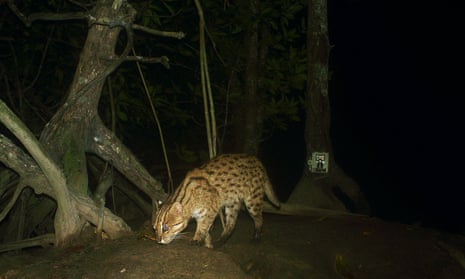
‘We found 700 different species’: astonishing array of wildlife discovered in Cambodia mangroves
Hairy-nosed otters and cats that catch fish are among the startling diversity of creatures making their home in threatened habitats
One of the most comprehensive biodiversity surveys ever carried out in a mangrove forest has revealed that an astonishing array of wildlife makes its home in these key, threatened habitats .
Hundreds of species – from bats to birds and fish to insects – were identified during the study of the Peam Krasop sanctuary and the adjacent Koh Kapik Ramsar reserve in Cambodia . Hairy-nosed otters, smooth-coated otters, large-spotted civets, long-tailed macaques and fishing cats, as well a wide range of bat species, were among the residents recorded by the survey, which was funded by the conservation group Fauna & Flora International. The variety of wildlife has staggered biologists.

“We found 700 different species in these mangrove forests but we suspect we have not even scratched the surface,” said Stefanie Rog, the leader the survey team, whose report is published on Sunday. “If we could look at the area in even greater depth we would find 10 times more, I am sure.”
Mangrove forests form narrow strips of tangled, wooded land on coasts in tropical and subtropical latitudes. They are important because they are made up of trees that have adapted to grow in salt or brackish water, which most other plants cannot tolerate. However, over the past few decades, the planet has lost about 40% of its mangroves, which have often been chopped down to make way for beach resorts or agriculture.
Yet mangroves play critically important roles in protecting the land and its inhabitants. Their waters provide nurseries for commercially important fish, for example. “We found young barracudas, snappers and groupers in the waters here,” said Rog. “They are clearly important breeding places for fish and provide local communities with food as well as providing stock for commercial fisheries.”
Mangroves also protect inland areas from tsunamis and storms, trap carbon far more efficiently than other types of woodland, and act as refuges for a stunning array of animals, as the new study revealed through its extensive use of camera traps, nets, fish and insect estimates, and “transect” surveys – studies conducted along a straight line drawn through the landscape.
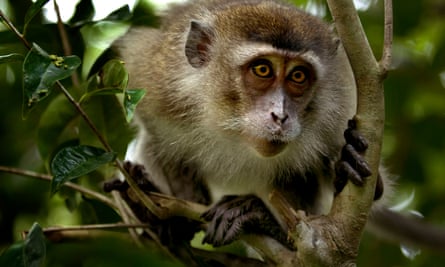
A key example of the strange species found in the Cambodian mangroves is the fishing cat, Prionailurus viverrinus . Slightly larger than a domestic breed, it is powerfully built, with short limbs and a stocky body, and – unlike most other cats – is happy to swim. Its front toes are partially webbed and its claws protrude, aiding its ability to catch prey, mainly fish and rats, which it stalks while hidden in mangrove roots.
“It’s very rare to see a fishing cat and we have only found out that they are in the forest from the photographs taken by our camera traps,” said Rog.
“Mangroves are places of roots and mud and they are difficult for humans to get into, which is why they provide precious sanctuaries for these vulnerable animals.”
An even rarer animal, the hairy-nosed otter, was also photographed by camera traps in some of the older parts of the mangrove forest. Lutra sumatrana uses hairs around its nose to detect its prey, which is made up of crustaceans, molluscs and other creatures.
after newsletter promotion
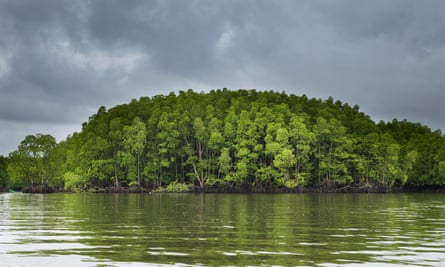
It is the rarest otter in Asia and on the verge of extinction – and that is an issue of real concern, said Rog. “A mangrove forest relies on all the interconnected relationships between species and if you start taking away some of those species, then slowly you will lose the functioning of the forest.”
The survey – which was also supported by the Fishing Cat Ecological Enterprise, a conservation group –discovered 74 species of fish living in the forests’ waters, as well as 150 species of birds, of which 15 are listed as near-threatened or endangered on the International Union for Conservation of Nature (IUCN) red list .
Scientists say that mangroves play a key role in preserving ecosystems because they act as two-way barriers between the land and the sea. They slow soil erosion into the ocean and protect coastal communities from flooding and storms.
“But it goes further than that,” added Rog. “Mangrove forests are beautiful, rich, mysterious, and harvest so much life.
“They are so much more than just an ecosystem that provides a carbon-saving service or coastal protection. They are actually beautiful in their own right. For me, there is no better feeling than to be in this unique, mythical forest, knowing there is still so much more to explore – that there is another world waiting for further discovery.”
- Endangered habitats
- The Observer
- Conservation
- Asia Pacific
Most viewed

IMAGES
VIDEO
COMMENTS
THE 10 BEST Cambodia Nature & Wildlife Tours. 1. Battambang Full Day Tour from Siem Reap - Bamboo Train, Killing Cave & Sunset. Battambang is one of Cambodia's most under rated destinations. Located 3 hours to the south of Siem Reap, this is a stunning…. 2. Cycling around The Mekong Island and Lunch with Locals.
Spanning more than sixty hectares of land, Phnom Penh Safari is a, first large-scale 200 with a concept of "Four Kingdoms" that exhibits four majestic and fascinating daily animal shows. Witness wildlife as they roam free in open enclosures resembling their natural habitats. Such a sight to behold!
Kulen Elephant Forest by private tour. 4. Just an hour from Siem Reap, the sacred mountain of Phnom Kulen is renowned for its beautiful Buddhist temples, ancient Angkorian ruins, and natural waterfalls. On this tour, spend a full day taking in the highlights and exploring the wild jungle trails in a car. Admire the gigantic reclining Buddha ...
Mondulkiri Gibbon and Wildlife Safari in Mondulkiri, Cambodia Trekking to Jahoo Gibbon Camp in the Wilds of Mondulkiri. Keo Seima Wildlife Sanctuary (KSWS) in eastern Cambodia's Mondulkiri Province is home to the Jahoo Gibbon Camp, which lies in the core of the sanctuary in the Seima Forest.Covering some 2,000 km2 the KSWS is working with multiple partners to preserve this critically ...
Travelogues. Monkeys, elephants, and the thrill of a tropical jungle — the forests here are one-of-a-kind in Southeast Asia. The Cardamom National Forest is the proper rainforest safari experience, done with care and in style. Patrolling with the armed Wildlife Alliance looking for poachers, setting camera traps with a resident naturalist ...
The Phnom Samkos Wildlife Sanctuary in Cambodia is a protected area of over 500,000 hectares of pristine forest, and is home to a wide variety of wildlife species. ... Take a Wildlife Safari A wildlife safari is the perfect way to explore the sanctuary and take in the sights and sounds of the wildlife. You can join a guided tour, or take your ...
Here are 10 things to do in the sanctuary that will make your visit unforgettable. 1. Go on a Wildlife Safari: Explore the sanctuary on a guided wildlife safari and spot some of the sanctuary's many species. Keep an eye out for elephants, tigers, bears, monkeys, and numerous bird species. 2.
1. Enjoy the wildlife. Image Source. The Phnom Penh Safari park is the hub of a vast range of the wild species. The park encompasses of different types of African birds including the endangered macaws. You will also get the sneak peek of the African lions in the park.
The best safaris and wildlife tours in Cambodia, created by a local travel agency. Request a local expert to create your perfect trip. ... Safari Holidays. Foodie Tours. Culture & Heritage. Whistle Stops. Honeymoon Holidays. Road Trip. Learning Holidays. ... The nicest time to visit Cambodia is between December and February. June is often the ...
Trekking to the Gibbon Jungle of Mondulkiri. Hike level: Moderate - moderate: Family friendly suitable for children over 8 years. Group size: 2 - 6 persons. Information: 1 Day Tour: $70 per adult. Children (8-12 years): $35. (Please note that children must be supervised by an accompanying adult at all times). Code: D1.
VIEW ALL ACTIVITIES. Call us on 0208 150 5150, for International callers 004420 8150 5150, send us an e-mail [email protected] or just use the form opposite. On arrival in Asia we will meet you at the airport, transfer you to your hotel and then sit down to run over your holiday program again.
This encounter with Cambodia will include our signature beach and temple safaris away from the crowds for your own unique adventure. We begin in the graceful capital of Phnom Penh, before we travel to Sihanoukville and descend on a remote white-sand beach to experience one of our signature beach safaris. We then head for the first of our remote ...
Cambodia wildlife safari might not be a hot destination for observers despite the country's landscape. Yet, some isolated jungle may provide the ultimate possibilities for wildlife surveillance in Southeast Asia. The truth is that Cambodia wildlife primarily lives in an intact ecosystem, such as the Elephant Mountains, the Lower Mekong, and ...
Sam Veasna Conservation Tours (SVC) is an officially registered tour company in Cambodia. We give visitors unique access to birding and wildlife sites across Cambodia. Our mission is to sustain Cambodia's wildlife and communities through ecotourism. Download Tour Catalogue.
The eco-camp is home to nine comfortable safari-style tents located inside Botum Sakor National Park that minimize the human footprint on the natural world and serve as a role model in promoting sustainable tourism practices in the park and within Cambodia as a whole. The desire to create the camp grew out of a concern that an 18,000-hectare ...
Dinner can be taken at the hotel or a nearby restaurant but is not included. Tomorrow we depart and start our journey south-east through Cambodia and towards the border with Vietnam, however we have some more excellent things to see and do in Cambodia first, so a good night's rest is well recommended. Day 7. Kratie (Yaek Lom Lake)
Wildlife holidays in Cambodia. Our wildlife holidays in Cambodia help protect the wildlife you're there to see. Care for sun bears at a sanctuary, encounter rescued monkeys and gibbons, cruise the Irrawaddy River looking for some of the world's rarest dolphins, bathe with Asian elephants in a small reserve, or support Cambodia's marine life while learning to dive.
Keo Siena Wildlife Sanctuary is being protected and studies by the community associated with Jahoo! We had an amazing time interacting with the local guides and researchers. We heard the gibbons singing each morning at 5:30am and had full days of hiking learning about the ecosystem and local culture. The food was delicious, fresh and plenty!
16. 10. Bus Tours. 5-7 hours. This tour is a great way to see the highlights of Sihanoukville in a short amount of time. You will visit the Fishing Village…. Recommended by 100% of travellers. from.
We have spent an unforgettable weekend at Cambodia Wildlife Sanctuary for a yoga retreat. All the staff of CWS were incredibly welcoming and made sure that everyone respected safety mesures for the animals. We got to meet their 3 rescued elephants, Sarai-Mia, Di-Ploh & Kaavan through small hikes in the jungle, their monkeys as well as other ...
Mondulkiri Gibbon & Wildlife Safari, Trekking - but with a community based focus! Hello! My name is Torn ... Keo Seima Wildlife Sanctuary (KSWS) in eastern Cambodia's Mondulkiri Province is home to the Jahoo Gibbon Camp, which lies in the core of the sanctuary in the Seima Forest. Covering some 2,000 km2 the KSWS is working with multiple ...
Cambodia and Vietnam are home to some incredible rare and enigmatic species and this trip is unique in combining these two countries and visiting some of the best wildlife watching locations in each. Some of the langurs, gibbons, birds and reptiles are so endangered that there are under 100 individuals left in the world.
Turtles. Both green sea turtle and leatherback turtle are native wildlife to Cambodia, along with freshwater turtles like the softshell turtle. Sea turtles come to the shores of Cambodia to lay eggs while freshwater turtles swim up the Mekong river. For sea turtles sightings, the best time of year is the early months, near Sre Ambel.
Smooth-coated otters in the mangroves. Photograph: Fauna & Flora/FCEE "We found 700 different species in these mangrove forests but we suspect we have not even scratched the surface," said ...
Using these maps, it was possible to calculate that of all the protected areas in Cambodia, Prey Lang Wildlife Sanctuary recorded the highest rate of forest loss, with almost 11,500 hectares ...